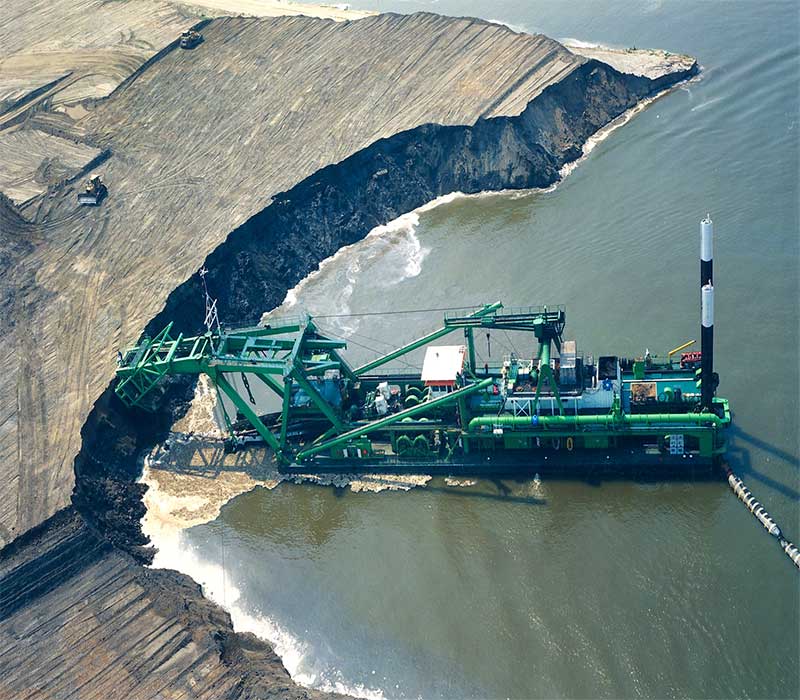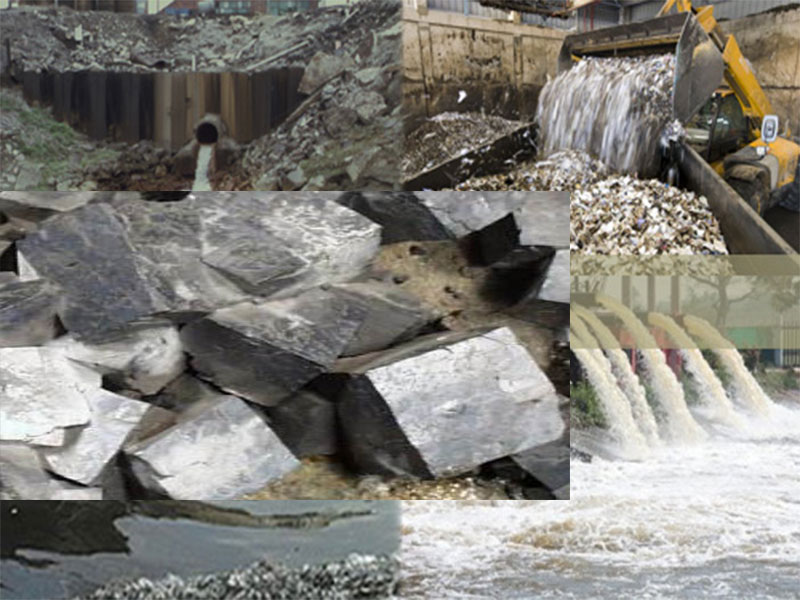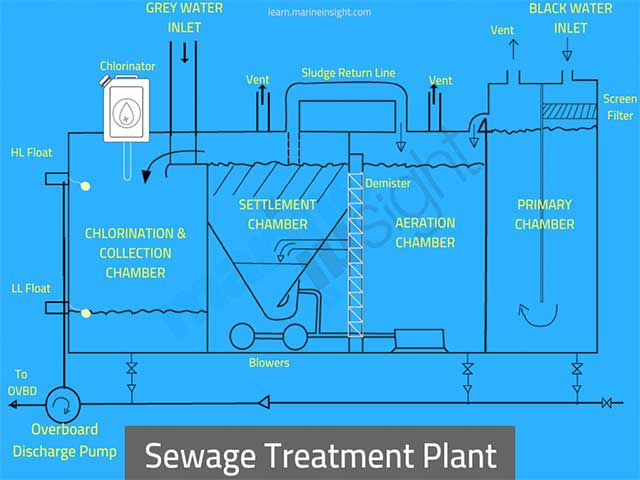Drinking Water Problems and Water Treatment solutions
Water is a simple chemical compound. The chemical formula of water is H2O. That is, each water molecule consists of one oxygen atom between two hydrogen atoms. Water is indispensable for human health and well-being; there can be no life on Earth without water. The human body is composed of 70% water. However, that same water could be hazardous to your health if not treated and purified. Untreated water contains turbidity, iron, manganese, high level of calcium and magnesium, nitrate, total dissolve solids (TDS), tannin, bacteria etc.
Why water treatment is so important?
Water is found almost everywhere on Earth. Water resources like underground water, rivers, lakes, which provide water contain a lot of pollution and contamination unfit for consumption. To be clean, the water should undergo a number of treatments necessary to make it drinkable. Water treatment and purifiers are designed to eliminate or reduce certain pollutants (nitrates, pesticides, heavy metals, organic materials etc.), as well as improve the quality taste of water.
Drinking untreated or unfiltered water can be harmful to the body. World Health Organization (WHO) published a list of WATERBORNE DISEASES that can affect people all over the world: diarrhea disease, Hepatitis A, Cholera, Botulism, Typhoid, Dysentery, Polio, etc.
Water treatment solutions to common water problems
Colour
There are many factors that may cause colour in water. The most common causes are iron, manganese, tannins, organic matter, and/or colloidal solids that are too small and too fine to settle out properly.
If the color is from tannin or humic acids, then a tannin filter might be applicable. These filters remove dissolved color by ion-exchange, using anion exchange media. The units use regenerate with rock salt (sodium chloride). While these are called tannin filters, they are really ion-exchange units.
Sometimes tannin are accompanied with iron or manganese. Water high in iron or manganese can sometimes be red, rust coloured, brown, tan, black, or greenish in colour. Oxidation, followed by a well-designed iron filter can be very effective at removing tannin and these oxidized iron particles.
Turbidity (Cloudy)
There are many factors that may cause cloudy or turbid water. Cloudy water can also be referred to as having high levels of turbidity. The most common causes of turbidity are organic matter, colloidal solids that are too small and too fine to settle out properly. These suspended particles can cause problems with disinfection processes and also an indicator of bacterial activity in the water. Turbidity is measured in NTU’s, (Nephelometric – Turbidity Units). The turbidity of drinking water should always be less than 1 NTU.
A very effective method to remove turbidity is with reverse osmosis (‘RO”) or ultrafiltration (“UF”) membrane systems. RO and UF systems can be used by homeowners, small communities and commercial sites to reduce turbidity and produce crystal clear water less than 0.1 NTUs. Another low cost option is to use a whole house cartridge filter. These filters are large size filter cartridge systems which come in various micron ratings and can filter down to the 1 micron size. One option frequently used by homeowners with cloudy water is to use a back-washing sediment filter, followed by a 1 or 5 micron filter cartridge system

Iron and Manganese
Iron and manganese are often found in a dissolved state in well waters, and the water appears clear when first drawn. Upon exposure to air, or after the addition of oxidants (such as chlorine bleach or ozone), this ferrous iron is oxidized (“rusted”) to the ferric state to form insoluble particles. The water then looks orange or yellow, or in the case with manganese, brown or black.
The role of pH is very important in iron treatment. Generally, if the pH of the water is acidic (or less than 7.0), it must be corrected with a special type of neutralizing filter of the iron filtration system. It is usually best to test for pH right at the water source, and not depend on laboratory analysis for pH, since in some cases the pH can raise after sampling, giving false results.

Hard Water
The term “water hardness” originally referred to the ability of water to precipitate soap and form soap scum. Soap is precipitated (or brought to the “surface”) by water containing high levels of calcium and magnesium. The “harder” the water the less soap will dissolve in the water.
The most common mechanical way to soften water is through the use of an ion exchange water softener. This device uses an ion exchange process to replace hardness minerals in the water with another substance. The vast majority of water softening equipment today exchanges hardness minerals for sodium. The process consists of flowing the hard water over a bed of plastic resin beads. On each bead, slight electric charges hold sodium ions on the surface of the bead. However, these beads also have the ability to attract and hold hardness minerals. As hard water flows through the water softener, it passes around the plastic beads. The hardness minerals (ions) in the water have a greater attraction to the bead than the sodium on the bead. Therefore, they attach themselves to the bead, and in the process they displace the sodium ions. Thus the name ion exchange.

Odour
In well water, odours are commonly the result of sulfur bacteria, or compounds of iron, manganese, and sulfates. For example, hydrogen sulfide gas (“rotten-egg odour”) commonly occurs in well water as a result of decaying organic matter and the activity of sulfates and various species of sulfur or iron bacteria.
Plumbed-in activated carbon filters work on the same principle as the jug filter to remove chlorine and organic substances but are not so effective on inorganic such as salts and metals. They consist of a filter head for connection to the water supply with a detachable bowl housing a filter cartridge incorporating a mechanical filter, which excludes grit, dirt, sand and so on.
The effectiveness of an activated carbon filter can be extended through additions to the basic filter material and different types of cartridge are now available, capable of removing or reducing a variety of additional substances. Activated carbon filters are also often used as the main element of a larger combination filter system, capable of removing heavy metals and nitrates.
Bacterial growth can occur in filters if they are left unused for a long period of time, as they would be, for instance, at a holiday home. Any treated water not used immediately should be refrigerated.
All filter cartridges should be changed regularly, in accordance with the manufacturer’s instructions. The maximum filter cartridge life recommended by BRITISH WATER is 6 months for standard filters
Nitrate
The primary causes of nitrate contamination in groundwater are failed or overloaded or improperly constructed and located septic systems, animal waste and fertilizer. Water that comes in contact with these sources will absorb nitrate and carry it down into the soil eventually ending up in the groundwater.
If a consumer chooses to reduce nitrate levels, there are several plumbed-in drinking water filters available to do the job. Be aware, though, that there are many types of drinking water filters available, with different capabilities and only some will remove or reduce nitrate.

Total dissolved solids (TDS)
TDS is the term used to describe the inorganic salts and small amounts of organic matter present in solution in water. The principal constituents are usually calcium, magnesium, sodium, and potassium cations and carbonate, hydrogencarbonate, chloride, sulfate, and nitrate anions.The higher the TDS, the less palatable the water is considered to be. TDS affects affect taste, TDS of over 500 – 600 ppm can have an alkaline taste
When the level of TDS exceed 1500 ppm, most people start to complain of dry skin, stiff laundry, and rapid corrosion of piping and fixtures. White spotting and films on surfaces and fixtures is also common.
TDS is removed by distillation, reverse-osmosis or electrodialysis. Increasingly most desalination projects, both large and small are accomplished with reverse-osmosis. Depending on the water chemistry, reverse osmosis systems are the most popular, given their low cost and ease of use.

Tannin
Tannins are natural organic materials that are usually the by-products of the natural break down of decaying vegetation and sometimes the product of “natures” fermentation process as opposed to the tannins found in wines. They are created as water passes through peaty soil and decaying vegetation. This causes the water to have a faint yellow to tea-like color, and can cause yellow staining on fabrics, fixtures, china and laundry. Tannin may give an unpleasant aftertaste to water. It may also cause water to have a musty or earthy odor. Tannins are sometimes referred to as fulvic or humic acids and are more common in surface water supplies, lake or river sources and shallow wells than in deep wells. Water in marshy, low-lying, or coastal areas is also more susceptible to tannins.
Tannin can be removed by tannin filters. These filters remove tannin by ion-exchange, using anion exchange media. The units we use regenerate with rock salt (sodium chloride) in the same way water softeners function. Frequently we see shallow wells under the influence of surface run-off water, achieve high levels of tannin (turning the water brown) during heavy rains periods. Tannin filters are often an excellent relatively low-cost technology to use for this type of problem.
A very effective method to remove tannin colour is by using ultrafiltration (“UF”) membrane systems. UF systems can be used by homeowners, small communities and commercial sites to reduce turbidity and produce crystal clear water less than 0.1 NTUs.

Low PH
Water with a pH lower than 7 is considered acidic. This can cause many problems in your home, such as damage to your plumbing and water-using appliances, blue-green staining, and poor-tasting water. If you think your home has an acidic water problem, the following overview will help you to identify acidic water signs, and learn how to test, treat and neutralize your home’s water.

Signs of Acidic Water
- Damage: When your home’s water has a low pH, this can cause damage to your plumbing and water-using appliances. Typically, acidic water damage first shows up as a blue-green build-up around pipe fittings. These eventually lead to pinhole leaks in piping, which can cause water damage within your walls.
- Staining: If you see blue-green staining around your fixtures or on your laundry, this could be due to acidic water. To clean these areas, try mixing baking soda and white vinegar into a paste, then scrub the stained area with a nylon mesh sponge.
- Odor/Taste: Acidic water can leave a metallic taste or odor in your drinking water. This can also be noticeable in water used for showering, cooking and brushing your teeth.
Treatment is accomplished by neutralizing the water with the use of a neutralizer filter. The filter uses a media in the filter which corrects the acidic nature of water without the need for mixing or dosing of chemicals. The media slowly reacts with water and the filter media is topped up, usually once a year

Bacteria
Coliform bacteria are common in the environment and are generally not harmful. However, the presence of these bacteria in well water or spring water usually indicates that the water may be contaminated with germs that can cause disease.
E. coli, is a type of faecal coliform bacteria commonly found in the intestines of animals and humans. E. coli is short for Escherichia coli. E. coli comes from human and animal wastes. The presence of E. coli in water is a strong indication of recent sewage or animal waste contamination. Sewage may contain many types of disease-causing organisms.
If the contamination is a recurring problem, try to identify the source of the problem (such as a defective well seal, or cracked casing) and fix it. You can also install a disinfection unit.
Talk to us for your upcoming water treatment requirement
Geodata Evaluation & Drilling LTD. offers water treatment services. For your water treatment requirement. contact us at www.geodatadrilling.com Phone: +234 8037055441



